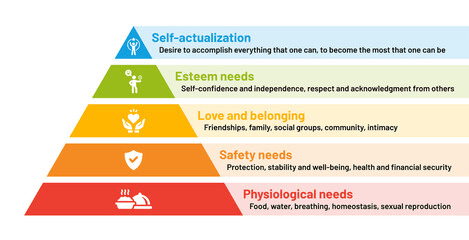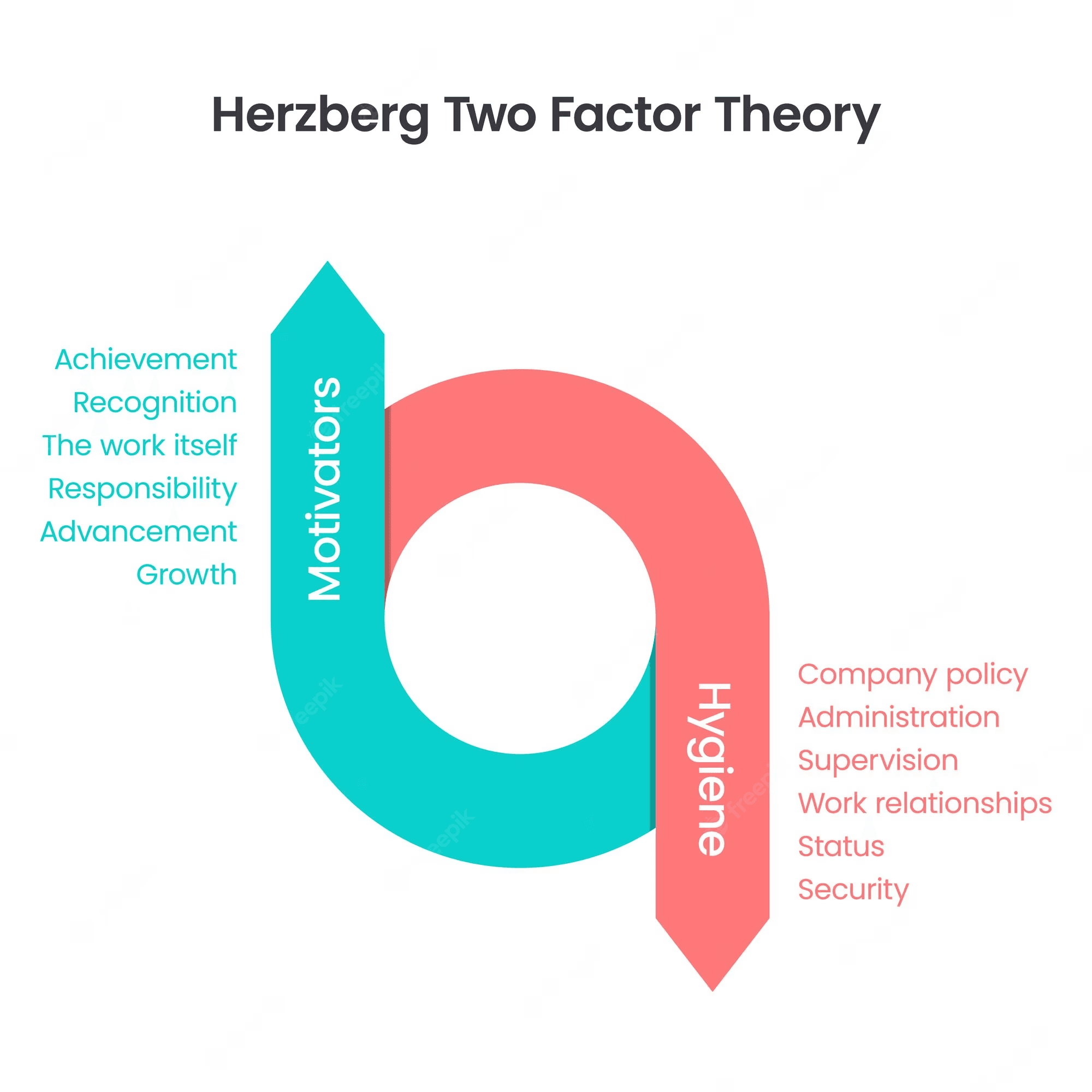Scroll down for more
Sales Motivation Techniques to Keep Your Sellers Inspired

With a challenging economy and a competitive labor market due to company staff cuts, many people are still looking for jobs; however, most of them are scared and do not want to work in the sales industry. Maybe because they cannot meet the job requirements, they lose motivation, which leads to more stress.
This article will discuss the importance of motivation for sellers and techniques to help them stay inspired.
Understanding Sales Motivation
Types of motivation
Motivation is an internal process that drives us to act to meet our goals. The nature of motivation is persistent, goal-driven behavior. When we have strong motivation, we are willing to take action to achieve our purposes.
Motivation has two types: Extrinsic motivation and Intrinsic motivation; however, some researchers have studied a third type of motivation called family motivation, which is very effective for people.
There are a lot of definitions for the three types of motivation, but we can understand them from their insights. For example:
-
Extrinsic motivation results from outside the individual and often involves external rewards such as trophies, money, social recognition, or praise. An example of this type is when you want to become the best seller in the company and must work so hard to meet or exceed the KPIs. With successful results, superiors will recognize you and praise you with a certificate or money in the crowd.
-
Intrinsic motivation comes from the internal individual that drives them to act for a sense of purpose. For the way you want to do exercises, no one forces you to do that, but for beauty or good health, you must motivate yourself to act seriously to obtain the goals.
-
Family motivation allows people to act for the desire to provide for their loved ones. Family motivation may not be intrinsic, but it relates too closely to intrinsic motivation. For example, when you go to work without any motivation internally, thus because you have to support your family financially, you have to work more diligently to earn money for your family. Family Motivation is a big inspiration for people to do the best things for their loved ones.
Although the three types of motivations come from different perspectives, they all have one thing in common: they all inspire and drive humans in the same way.

Maslow’s Hierarchy of Needs
When mentioning motivation, we must discuss Maslow’s Hierarchy of Needs, which is considered an immortal theory over time. Abraham Maslow proposed the Maslow's Hierarchy of Needs as a motivational theory in 1943. Maslow's Hierarchy of Needs says that people have a set of basic needs that help them become self-actualized and happy.
Abraham Maslow organized his theory into a pyramid with five levels, representing five human needs, with the most fundamental needs at the bottom and the highest at the top.
The five demands of human beings are:
- Physiological needs: These are principal human needs, such as air, water, food, accommodations, and sleep.
- Safety needs: When these basic needs are met, people will tend to higher demands for security and safety. They hope to protect themselves from dangers or threats in their environment.
- Love/belonging needs: After humans feel safe in their environment, they will seek the connections and sense of love that may make their life more meaningful.
- Esteem needs: When having more relationships, people gradually want to build self-esteem and confidence, such as recognition, praise, respect, or achievement.
- Self-actualization: At the top of the pyramid, individuals seek to fulfill their potential strengths and achieve self-actualization, like personal growth, creativity, and a sense of purpose.
Maslow thought that people would have to meet their basic needs before they could move on to higher needs when he came up with this theory.
Depending on the circumstances and conditions, each individual will have to meet their own needs from time to time, but meeting the highest standards in the tower will be a long and continuous process.

Herzberg’s Two-Factor Theory
In the 1950s, Frederick Herzberg created Herzberg's Two-Factor Theory, which is a motivational theory. After surveying several employees in different firms in Pittsburgh, Mr. Herzberg concluded that there are two types of factors influencing job satisfaction and motivation: hygiene factors and motivators.
Hygiene factors are the primary conditions of employment that include the base wage or salary, working conditions, job security, company policies and rules, and coworker relations.
These factors aim to eliminate employee dissatisfaction at work; thus, when the company meets these factors, employees are both not dissatisfied and lack the motivation to perform at a higher level.
On the contrary, motivators contribute to job satisfaction and motivation for employees. We can list some factors such as achievement, praise, chances for personal growth and development, recognition, or advancements.
The meaning of this theory is that two types of factors are separate and independent of each other. Herzberg tells employers that they can increase motivation and job satisfaction by combining two types of factors in a more flexible way. They should take care of their employees' basic needs and make the workplace a place where people can grow, achieve, and be recognized.

Self-Determination Theory
Self-determination theory is a theory drawn from the work of psychologists Edward Deci and Richard Ryan in 1985. The theory explains what self-determination is and how it affects motivation and behavioral drive in each individual. According to this theory, three innate psychological needs motivate people: autonomy, competence, and cooperation.
-
The need for autonomy: people must be able to control their behavior and objectives. When they take responsibility for their actions and goals, they will accept results without blaming anyone.
-
Competency needs: This is a prerequisite that everyone wants to meet to complete tasks requiring a range of knowledge and skills. When people need any skill or expertise, learning determines their actions to accomplish the goal.
-
Cooperation needs: People have more interactions to connect and collaborate with others to assist and collaborate for mutual objectives.
Self-determination theory mainly deals with the ability of individuals to make choices and manage their own lives. It offers people a sense of control over their decisions and lives. It also affects motivation; people are more motivated to do things when they believe others recognize their efforts.
Expectancy Theory
The Expectancy Theory of Motivation proposed by Victor Vroom of the Yale School of Management in 1964 focuses on results, not on a need like Maslow or Herzberg do. His expectancy theory describes what motivates people to get things done and how our perception of future expectations affects our behavior and motivation.
The Expectancy Theory of Motivation shows that employee motivation is an outcome of three factors:
- Expectancy: It is the faith that better attempts will bring better results. Expectancy has a close connection with efforts and performances. The more efforts employees make, the better results they receive as expected.
Possession of knowledge, accessibility to resources, availability of information, or support required for job completion all have an impact on expectancy.
-
Instrumentality: This is a belief that people who can do something well or over tend to think of obtaining more deserving rewards than others. Some factors influencing it are company policies, salary, allowances, etc.
-
Valence: This factor concentrates on the comparison between rewards with objectives and the needs of each person, which is represented through the judgments of each individual. For example, an employee works hard for a promotion, but others just work to generate higher results for a higher salary.
The Expectancy Theory of Motivation emphasizes the power of rewards or recognition in motivating people to perform at their best; therefore, employers should focus on what employees want to receive when getting high-performing employees to meet their demands. In this way, employers can improve productivity, quality, and employee participation.
Techniques to Motivate Sellers
We now have a basic grasp of motivation after learning about various types and theories of motivation. However, for more details about how we can motivate employees, particularly the sales team, read through the following steps:
Set clear, achievable goals and expectations
The sales goals of a business are the goals and expectations that are set to help the business grow, make more money, reach more customers, improve the sales process, and so on. The company's sales strategy will vary depending on the target.
Creating clear, achievable goals and expectations provides an overview for the business and the sales team, giving them a clear road map of what they need to do to help the company achieve its overall goals and expectations.
Furthermore, sales objectives and expectations must be SMART, which stands for Specific, Measurable, Achievable, Relevant, and Time-bound. Use these factors as a checklist to make every objective a SMART goal and drive your business toward success.

Provide regular feedback and recognition
Providing regular feedback and recognition is significant in achieving the big goal of the business. Now that each individual and team have separate goals and methods to achieve the objectives, the team leader or superiors should focus on tracking their working process and results.
By giving on-time feedback, the salespersons will develop their strengths and, besides, improve their weaknesses relating to knowledge so that they can adjust their strategy to meet the objectives. It would be a motivation for them to enhance themselves and become better and better.
Another motivation is recognition. Continuous recognition is one of the strongest motivations for inspiring employees to work more productively. No matter how employees perform, they will also feel their efforts acknowledged, which will drive them to strive for better.
Foster a positive work environment
In his theory, Mr. Herzberg said that the working environment is one of the things that motivates people at work. A positive working environment is a place where workers feel comfortable and optimistic, so they are willing to work diligently to generate better outcomes.
To promote this environment, we can improve working conditions such as facilities and open, spacious, and always clean spaces, in addition to concentrating on company policies such as salary, promotions, allowances, etc. We should also give more attention to employee relationships to ensure they are getting along well and supporting one another.
Now that most sellers always feel under pressure to meet goals or KPIs, if a company creates a positive working environment, they will feel less stress and be motivated to meet the goals.
Offer incentives and rewards
According to the expectancy theory, employees want to be recognized for their work, so a business should set up incentives or reward systems to make sure that everyone gets something when the goals are reached. They will receive incentives and rewards based on how well they accomplish the goals.
Employees who see company recognition will be more motivated to develop themselves and do their jobs well to achieve their personal goals and add to the company's overall goal.
Invest in training and development
It is thought that giving employees training and opportunities for personal growth is a way to motivate them because they can do their jobs better with more skills and knowledge. Especially in the sales industry, they will be trained to improve a lot of working processes and communication skills to generate leads and sign contracts successfully.
Creating an organized training system on knowledge and skills for personnel will be a crucial component in creating motivation and increasing employee retention rates.
Foster collaboration and teamwork
Collaboration and working as a team are important if you want to reach your goals and build strong relationships with the other people on your team. Teamwork and collaboration are the foundation of any successful company. Collaborative workplaces have higher levels of trust, greater employee engagement, and higher performance.
Here are some ways to foster collaboration and teamwork:
- Define goals and roles: Make it clear what the team's goals are and what each member's part is in achieving them. This helps everyone comprehend their roles and how they contribute to the success of the team.
- Promote communication: Encourage team members to communicate freely and honestly, which includes actively listening to and providing feedback on others' ideas and feedback, asking questions, and providing a constructive opinion.
- Develop trust: Trust is essential for successful collaboration. Encourage team members to be transparent, and trustworthy, and to trust one another to keep promises.
- Celebrate team triumphs and milestones to boost team morale and promote a positive culture, which fosters a feeling of shared ownership and pride in the team's achievements.
- Give training and support to help team members develop the skills and knowledge they need for their roles. This also helps to create a mindset of always learning and getting better.
Encourage diversity and inclusion. Let people with different backgrounds, points of view, and skills join your team. This can lead to better ideas and better results. Additionally, ensure that all team members, despite their differences, feel included and valued.
Encourage autonomy and ownership
Autonomy means giving employees the freedom to work in the way that they feel comfortable working, and trust is the foundation of autonomy. Autonomy is also a key component of employees’ engagement with work and the organization because they want to make their own choices and not follow other people's decisions.
Employees experience a sense of ownership and responsibility when they have decision-making authority. Giving someone the power to make a decision shows that you trust their skills and judgment, which boosts their confidence and interest.
To encourage autonomy and ownership in employees, leaders need to build trust first and then allow employees to share their experiences, mistakes, and lessons learned with the team. This creates an open environment for them to share their ideas and freely take on tasks with minimal risks.
Since there is autonomy and ownership in the workplace, the leader should regularly set the deadline, monitor the process, and give support as needed to guarantee that the goals are satisfied.
Lead by example
Leading by example is a leadership style in which the leader or managers model the behavior they expect to see in their team members. When a leader or manager leads by example, they don't just push team members to achieve excellence; they actively show it.
To lead by example successfully, a leader or manager should get involved in teams’ initiatives to understand more than their contributions, value their work, listen to them actively, put them first, and be more flexible with the changes.
Retaining Sellers
Opportunities for growth and advancement
Employees, especially sellers, are always looking for opportunities for growth and advancement, whether they are interns or full-time employees. They want to gain more expertise and skills to function in various fields at various levels within the business.
Employees who believe they can no longer grow tend to seek a new environment where they can fill knowledge and ability gaps. As a result, the business should put more emphasis on it because it affects employee retention.
Competitive compensation and benefits
Among the ways to retain sellers, businesses can offer competitive compensation and benefit packages. Competitive compensation includes salary, bonuses, and commissions, while benefits involve vacation time, insurance packages, stock options, etc.
If they receive a competitive salary and benefits package, employees will feel valued and appreciated by the company. When their physical and health needs are met, they will continue to work and contribute to the company rather than look for a new job.
Company culture and work-life balance
Company culture and work-life balance are factors helping to keep employees at the firm. Employees always look for a positive, open, comfortable environment with kind colleagues rather than a toxic, stressful one with strict people. The final purpose of working is to make money to satisfy their mental and physical lives, so employees will seek a work-life balance environment to avoid stress and overload during work.
By understanding their insights, the company can adjust the working form—like remote, hybrid, or flexible working hours—for employees to seem enjoyable and to make greater productivity.
Open-door policy for communication
One of the most vital factors in the company is communication with the staff. Implementing an open-door policy in the workplace encourages effective communication between employees and management. The employees do not feel lonely at the workplace as they know there is someone to support them as needed.
When they are free to discuss problems with superiors or teammates to seek help or support, they will have the motivation to strive hard to complete the goals.
Sense of purpose and meaning
A sense of purpose and meaning provides a source of energy and direction that helps people recognize the importance of having intentionality in their lives. Their behaviors and work performances reflect their sense of purpose and meaning.
Employees will be more motivated to do a good job if they know that what they do is important to the company as a whole. Leaders or managers should create work environments that give their staff the sense of purpose they need to do well.
Employee wellness programs
A program to improve and promote the health and fitness of employees at work is called an employee wellness program. A wellness program offers participants premium discounts, cash rewards, gym memberships, and other incentives.
The company offers this program to develop employee well-being and enhance productivity and organizational performance in the workplace, which is also considered a way to retain employees.

Overcoming Challenges in Sales Motivation
Understanding individual motivations
Understanding individual motivation is one of the challenges that sales leaders may face because each member has distinct motivations for their development, such as being promoted, becoming the best seller of the month, or meeting the monthly KPIs.
Spending time figuring out what drives each person will take time, but once leaders know, they can set KPIs that fit the staff's skills and goals.
Managing stress and burnout
Stress and burnout are common challenges for salespeople, especially in a competitive and fast-paced environment. Stress and burnout may come from pressure to meet KPIs, working with rejections, and a lack of resources, which directly impact employees’ motivation, resilience, and communication skills.
Before sellers can reach their goals, they have to deal with stress and burnout, which can affect their performance.
Addressing conflicts and performance issues
One challenge in creating sales motivation is resolving conflicts and performance problems. The reason is a lack of communication and connection between the parties, which leads to misunderstandings and a failure to evaluate each person's performance. As a result, it makes it hard to present, give opinions, and talk about how to solve the problem.
Handling employee turnover
One of the challenges that companies face is handling employee turnover - a metric that measures how frequently employees leave a company on a monthly, quarterly, and annual basis.
Employees leave the company for various reasons, including voluntary reasons such as retirement or contract expiration, a desire to find a new environment to develop, and non-voluntary reasons such as violations of rules or a wave of widespread firings in the company.
The rise in employee turnover means that the company is facing many internal issues, such as policies, working conditions, and management systems. To reduce employee turnover, they should hire the right person, improve career development policies, and provide many other benefits.

Conclusion
Motivation is important for achieving each person's goals, helping with self-development, and making sure that each person is happy. Understanding individual motivation and how to drive the motivation of the staff, particularly the sales team, is critical, which assists that individual in meeting personal needs and adds to the company's overall objectives.
At MLTech Soft, we've set up the best conditions for every employee to be motivated, especially the sales team's desire to get more leads, sign more contracts, and connect with more clients around the world.
Get our blog
Want the latest and greatest from our blog straight to your inbox? Chunk us your details and get a sweet weekly email.
Read more in our blog

Project Management
The Impact of Dynamic Pricing on Customer BehaviorExplore the impact of dynamic pricing on customer behavior and learn how to implement effective pricing strategies.

Project Management
Focus in Scrum: Keeping Your Team on TrackDiscover effective strategies to maintain focus within your Scrum team, overcome common challenges, and boost productivity.

Project Management
Key Metrics for Mobile App SuccessDiscover the essential metrics for mobile app success, from user acquisition and engagement to monetization and performance.
MLTECH SOFT